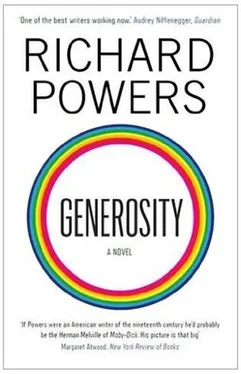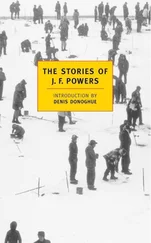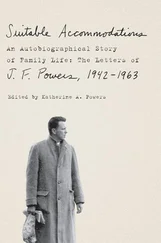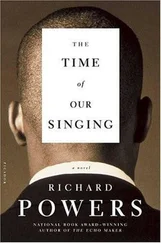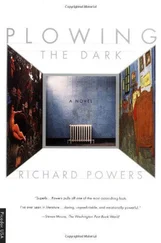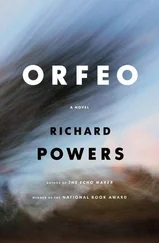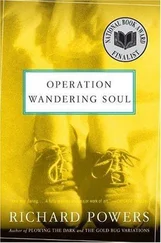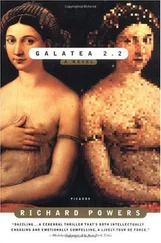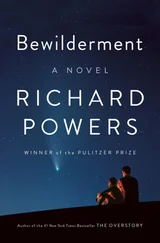Yet this backlash takes him on the chin, as bad as the first fray he landed in, back at the Cardinal Hayes High School science fair. He understands the tribal fear and self-protection behind this aggression. But his work aims only to relieve ill health, free people from the body’s caprice, and crack open the prison of inherited fate.
He strolls through the mobbed baggage claim with his single carry-on. The airport loop is a snarl of shuttles, taxis, and cars. The matter transporter will not come a day too soon. Two people on the Blue Line back into the city think they recognize him from The Oona Show . But they decide no; the founder of seven biotech companies, adviser to six scientific journals, and discoverer of the major genetic contribution to human well-being can’t possibly be riding the subway.
He gets out at Government Center and walks to his brownstone on Beacon Street; walking reduces the risk of many major disease predispositions. It’s late afternoon, and the streets fill with the change of shifts. Vendors, Bible-waving preachers, one-man bands, and stump speakers cluster at the foot of the hill beneath the State House, as crowds pour down the subway steps at Park Street. He cuts across the lustrous Common, exhilarated by the human pageant. Fifty yards away from his front door, he sees that his first-floor bay window has been smashed. He trots the rest of the way, saving a few seconds by rushing to a crime committed hours earlier.
He finds a paver pulled up from the sidewalk sitting in his living room. He turns it over in his trembling hands, looking for the attached note. There is no attached note. He sits down, light-headed, confused. Why send someone a message, if there’s no message?
He knows the message. Are we not men? Leave us the hell alone. He sits for a few minutes, afraid to call the police. He shuts off the light, to hide his silhouette. After a while, he goes down into the cellar and brings up a piece of pressboard large enough to cover the broken window. He tacks it into place, a barrier, at least. Then he leaves a voice mail with his handyman.
He makes himself a blueberry soy shake, which calms him a little. He goes online to see what kind of hate-mongering the show produced. Reaction is all over the map, from morose to ecstatic. But he sees no violent threats, at first glance. He logs off the browser and occupies himself with the surge of waiting correspondence. But he works at no more than half efficiency. He recoils at every floorboard creek, waiting for the follow-up message. After an hour of twitching, rather than continue to spin out, he decides to drive up to Maine.
It’s late already, but a night drive will clear his head. He throws his still-packed bag into the Insight, the most fuel-efficient vehicle ever sold on the mass market. He’d have bought it for the engineering achievement alone. Only innovation, now, will buy the race enough time to work its next escape.
He drives for hours, into the night. He keeps himself awake listening to an audiobook of The Plague , the novel that defeated him at Stanford, when his ex-wife made him read it. You want to devote your life to life science? Read this first.
He’s gone back to Camus after talking with Thassa about the man. She filled him in on all the context he missed when reading the work in his twenties. She quoted the author’s notorious declaration, at the height of the savage war: If I have to choose between justice and my mother, I would choose my mother. Kurton’s justice is the freedom of research, rapidly decamping to the western Pacific Rim. His mother has been in a home in Westchester County for the last four years, ever since her defective APOE allele caught up with her. The choice would still not be easy, but it would be clear.
As a young man, Thomas never thought to wonder why Camus’s Oran had so few named Arabs in it. Thassa set him straight on that as well. I do love him , the Algerian said. He was both beautiful and humane. But also as blind as anyone with his background. Thomas finds him blindly humane, too, as he drives up to Maine in the dark. But the problem is not with the enlightened pied-noir . The problem is with the craft of fiction.
The whole grandiose idea that life’s meaning plays out in individual negotiations makes the scientist wince. Intimate consciousness, domestic tranquility, self-making: Kurton considers them all blatant distractions from the true explosion in human capability. Fiction seems at best willfully naïve. Too many soul-searchers wandering head-down through too many self-created crises, while all about them, the race is changing the universe. That much is clear to Kurton, as he slips off the interstate and onto the winding, coastal Route 1.
Worse, fiction’s perpetual mistaking of correlation for causation drives Kurton nuts. Even Camus can’t help deploying bits of his characters’ histories as if they explained all subsequent behaviors and beliefs. The trick smacks of an environmental determinism more reductive than anything that has ever come out of Kurton’s labs. My upbringing made me do it
Kurton knows never to give his own biographical details to any reporter, or if he has to, to make them up. That’s what the brain-body loop does, anyway: it’s not the traumas Thomas remembers that shape Thomas-not so long as Thomas shapes the traumas Thomas remembers. He has never tried to hide his background; it’s just irrelevant. Kurton’s discoveries are only interesting if someone with completely different needs can reproduce them. The double-blind study frees human history from the trap of bias and sets it loose in a place beyond personality.
He wants to live long enough to witness a new, post-genomic fiction, one that grasps the interpenetrating loops of inheritance and upbringing so tangled that every cause is some other cause’s effect. One that, through a kind of collaborative writing, shakes free of the prejudices of any individual maker. For now, fiction remains at best a scattershot mood-regulating concoction-a powerful if erratic cocktail like Ritalin for ADHD, or benzodiazepines for the sociophobe. In time, like every other human creation, it will be replaced by better, more precise molecular fine-tuning.
The Plague ends about half an hour outside of East Boothbay. The road by then is black and barely two car widths. Through the speakers scattered around the capsule of Kurton’s car, the narrator speaks those words that so puzzled Thomas as a grad student:
He knew what those jubilant crowds did not know but could have learned from books: that the plague bacillus never dies or disappears for good; that it can lie dormant for years and years in furniture and linen-chests; that it bides its time in bedrooms, cellars, trunks, and bookshelves; and that perhaps the day would come when, for the bane and the enlightening of men, it would rouse up its rats again and send them forth to die in a happy city.
He parks his car halfway up the driveway and stands for a while on the sloping hill, looking down toward his dock. He scouts the sheltered cove just to the left of the dock, where once again tonight, from the dark water (although not so dark that day as now), his eleven-year-old brother Brad emerges, bathed in a magic blue light, an electrostatic globe that jerks him about like a livid puppet before kicking him up limp, forever, onto the pebbled beach. Brad, so skeptical and taciturn that even a sky full of thunderheads could not rouse him from the water. And Tommy, empirical Tommy, long out of the water and halfway up to the house, and life
Upstairs in what was for decades his parents’ old bayside bedroom, the smell of cedar and musty quilts sends Kurton instantly to sleep.

He wakes refreshed but a little hangdog that something so small as a paving brick could send him so far for safety. Over a breakfast of half a scoop of steel-cut oats, he checks his BlackBerry feeds. His aggregator for the name Amzwar produces so much junk he is forced to skim. He’s stopped by an item that has already started to multiply and mutate. Several print and Web journalists are reporting an offer by a midsized Bay Area biotech firm of $14,000 for ten of the Algerian woman’s eggs.
Читать дальше
